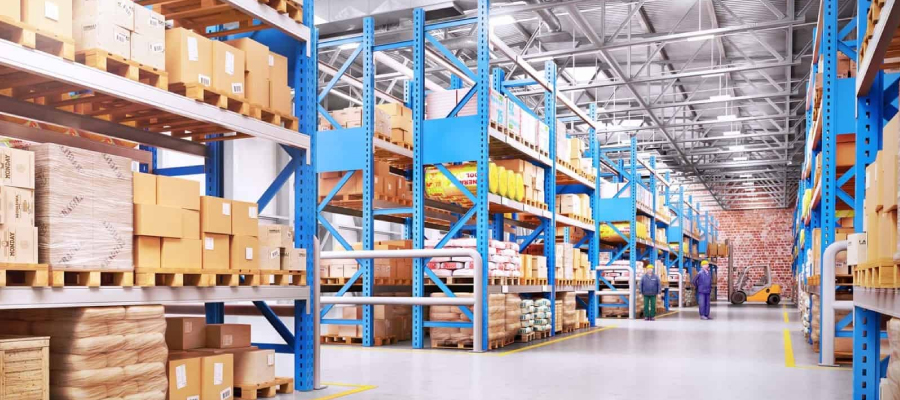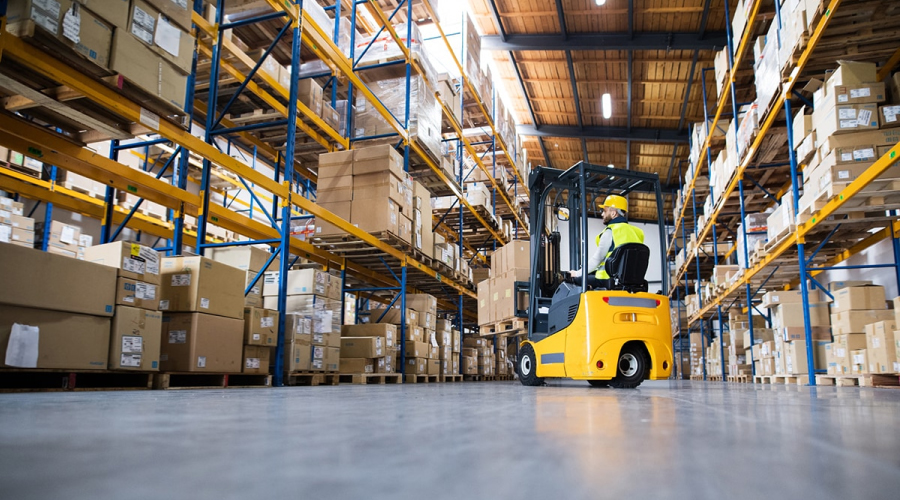Storage capacity is one of the most frequent problems for entrepreneurs operating e-commerce enterprises, and choosing the right warehouse is their only choice. However, selecting the right warehouse is a critical challenge. If you are also facing this issue, your goal in selecting the ideal warehouse is to be assisted by this blog post. This decision significantly impacts your logistics, expenses, and overall productivity, regardless of the size of your business. This article will give you crucial advice for selecting the ideal storage space.
Why Choosing the Right Warehouse?
Choosing the right warehouse can make or break your inventory management and distribution efforts. When your warehouse is well-managed, your products are always available when your customers need them, which helps build trust and loyalty. You can concentrate on what really matters by streamlining the processes for receiving and organizing your goods: growing your business and ensuring your customers are happy.
Tips For Choosing The Right Warehouse!

Selecting the appropriate warehouse is essential for companies of all kinds. A carefully chosen warehouse may lower expenses, improve customer happiness, and streamline operations. This in-depth manual offers crucial advice on examining your company’s requirements, taking location into account, appraising facility characteristics, computing expenses, and choosing a trustworthy warehouse partner.
Assess Your Business Needs
Evaluating your unique company requirements is critical before you look at possible warehouses. So, consider your needs for distribution and storage. Note how much stock you want to keep. Do you work with big volumes of merchandise, or is your inventory smaller? Consider the things that you will be keeping as well. Are they frail, temporary, or even dangerous? You may greatly reduce your alternatives by being aware of these things.
Next, assess your distribution needs! How soon must you send your clients’ orders for products? Is the market you’re in local, national, or perhaps international? You may choose the best location and features for your warehouse by considering the frequency of shipments.
Location Considerations
Another important thing to distinguish is the location. Having a warehouse near ports, railroads, highways, or airports can save you both transportation costs and time. Shipping your goods will make getting closer to important transportation networks easier.
Keep your client’s location in mind as well because a well-located warehouse shortens the shipment times and for customer satisfaction.
Besides, keeping municipal rules, such as tax and zoning ordinances, is important. Certain regions provide business advantages, while others might impose limitations incompatible with your company’s business plan.
Evaluate Facility Features
It’s time to assess each facility’s attributes after you’ve shortened down probable places. Value the warehouse’s design and available space. Is the racking system adequate for your inventory? Is the floor plan well-organized and supportive of effective operations? Flexibility for future growth is also crucial; ensure the facility can expand to meet your organization’s needs.
Prioritize technology since it is a big part of warehouse management in today’s digital environment. An effective Warehouse Management System (WMS) is essential for tracking inventory and completing orders quickly in a quality warehouse. Additionally, automation expedites the procedures while lowering labor costs and increasing accuracy.
Consider Safety & Compliance
Selecting a warehouse should never compromise on safety and compliance. Verify the facility follows all safety regulations. Look for fire safety precautions and confirm that the warehouse meets OSHA requirements to safeguard your products and staff. Furthermore, there are rules that you must follow that are particular to your sector.
Analyze Costs & Pricing Models
Cost is a consideration in all company choices when choosing a warehouse. Decide on whether buying or renting a warehouse would benefit you more. Pros and drawbacks apply to each choice. Ownership can result in long-term savings while renting gives flexibility.
Consider the business’s rent and costs, such as labor, maintenance, and utilities. To better understand your entire spending, include these in your budget.
Examine the many pricing options that are offered. While some warehouses may charge a fixed fee, others may charge a variable fee according to how much is used. It is vital to comprehend the value of the money you are spending.
Assess Service & Support
Your connection with a warehouse supplier might succeed or fail based on their customer service. Seek a warehouse with dependable and attentive customer support. You want a staff member who can promptly resolve any difficulties and is easy to interact with.
Some warehouses also offer additional services such as labeling, packaging, and kitting. You may save time and improve operational efficiency with these value-added services.
Visit & Inspect Potential Warehouses
After you’ve reduced the number of warehouses you may consider using, it’s time to visit and take a look. Ensure to check the facilities out in person. Look at the building’s state and the state of the machinery. For efficient operations, a well-maintained warehouse is essential.
Take the opportunity to meet the employees responsible for handling your inventory. You may feel more assured that they can manage your inventory effectively if you are aware of their experience and areas of specialization.
Request & Review Proposals
At last, the moment has come to dive into the details. Get quotations from many warehouse suppliers so you can evaluate features and costs. Spend some time considering your options rather than picking the first one that seems right.
Verify references from recent or previous customers before deciding. Learning from others’ experiences can provide insights that may not be apparent from the proposal alone.
Conclusion
Selecting the appropriate warehouse is a crucial choice affecting your company’s productivity and profitability. Through a thorough assessment of your requirements, location, features, and pricing, you can make an informed selection that will position your company for success.
Have you had the experience of choosing a warehouse? Which advice or personal stories would you share? Please share your thoughts in the comments section below, and don’t forget to subscribe for more storage and logistics ideas!
FAQs
What differentiates private and public warehouses?
Private warehouses are owned or leased by a single firm, whereas public warehouses are third-party storage facilities shared by several enterprises. Private warehouses offer greater control and customization, making them perfect for larger firms. On the other hand, public warehouses are more cost-effective and versatile for smaller businesses.
What should I keep in a warehouse to impact the system that controls the climate?
Climate-controlled warehouses manage temperature and humidity, which is critical for keeping sensitive items like medications, food, or electronics. If any of your items are sensitive to temperature, ensure the warehouse has the right climate control.
Which innovations are positively impacting warehousing?
Artificial intelligence, robots, and the Internet of Things increase productivity, decrease human error, and streamline warehouse inventory management. These technologies provide more accurate inventory and speedier fulfillment.
What environmental factors should I consider when choosing a warehouse?
Many contemporary warehouses prioritize sustainability by implementing recycling initiatives, eco-friendly packaging materials, and energy-efficient lighting. Selecting an ecologically friendly warehouse may lower your company’s carbon footprint and support green projects.





